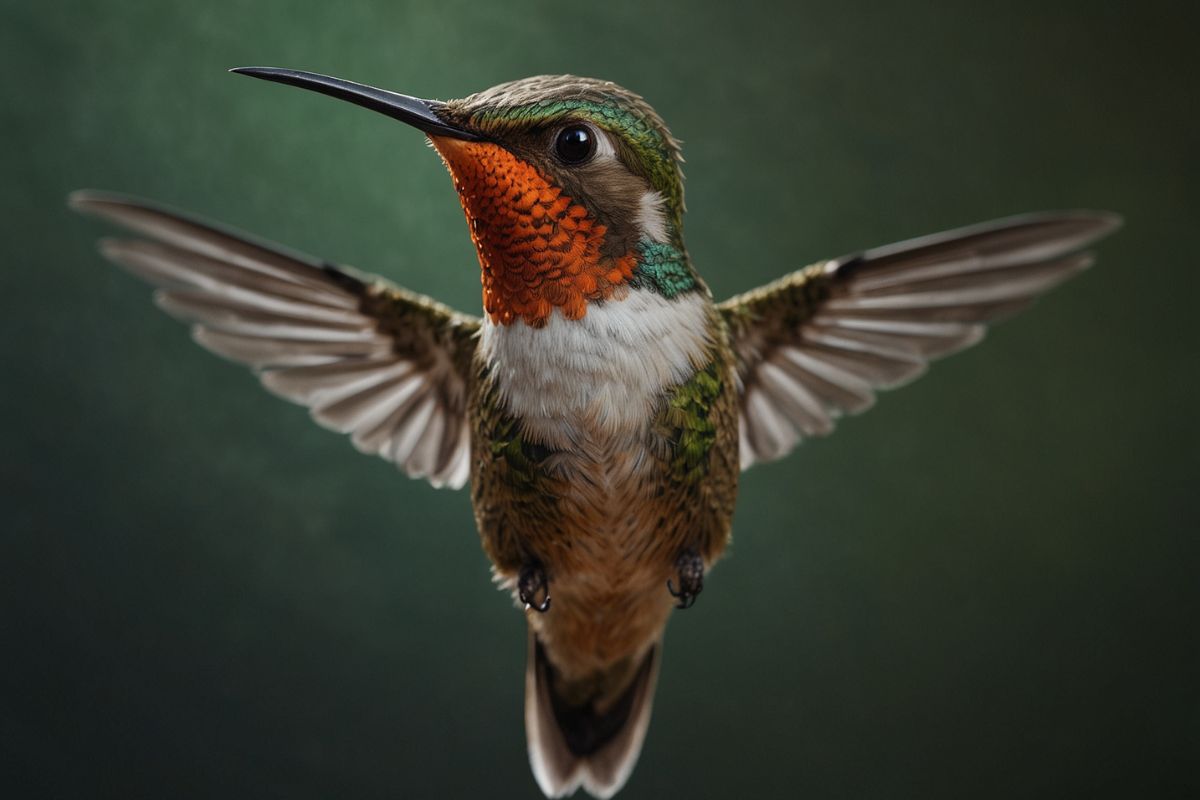Hummingbirds flap their wings at incredibly high speeds, ranging from 12 to 80 times per second, depending on the species. Smaller hummingbirds generally have higher wing beat frequencies compared to larger species.
In this blog post, we will explore the incredible wing-flapping speeds of various hummingbird species and explore the factors that influence their wing beat frequency.
How Fast Do Hummingbirds Flap Their Wings?
The speed at which hummingbirds flap their wings is truly astounding. On average, hummingbirds flap their wings between 50 and 80 times per second. However, this number can vary significantly depending on the species and size of the hummingbird.
The ruby-throated hummingbird, a common species in North America, flaps its wings about 50 times per second. In contrast, the bee hummingbird, the smallest bird in the world found in Cuba, can flap its wings at an incredible speed of more than 80 times per second.
Larger species, such as the giant hummingbird found in the Andes, have a slower wing beat rate of around 12 times per second.
Factors Influencing Wing Beat Frequency
Several factors contribute to the variation in wing beat frequency among hummingbird species. One of the primary factors is body size. Generally, smaller hummingbirds have higher wing beat frequencies compared to larger species.
This is because smaller birds need to flap their wings more rapidly to generate the necessary lift and thrust to maintain flight.
Another factor influencing wing beat frequency is the hummingbird’s flight style and behaviour. Hummingbirds are known for their ability to hover in mid-air, fly backwards, and perform intricate aerial manoeuvres. These flight patterns require rapid wing beats to maintain stability and control.
Hummingbird Wing Anatomy
Hummingbird wings are specially adapted for their high-frequency flapping. Their wings are relatively small compared to their body size, but they are incredibly strong and flexible. Hummingbird wing bones are hollow and lightweight, allowing for quick and efficient movement.
The shape of hummingbird wings also contributes to their flight capabilities. Hummingbird wings are long, narrow, and tapered, with a high aspect ratio. This shape allows for efficient lift generation and precise control during flight.
Metabolism and Energy Requirements
The high wing beat frequencies of hummingbirds require an immense amount of energy. Hummingbirds have the highest metabolic rates of any vertebrate relative to their body size.
They need to consume large amounts of nectar to fuel their rapid wing beats and maintain their high body temperature.
To meet their energy demands, hummingbirds feed on nectar from flowers, which is rich in sugars. They also supplement their diet with small insects for protein.
Hummingbirds have evolved efficient digestive systems that allow them to quickly process and absorb the nutrients from their food.
Hummingbird Wing Speed Comparison Table
| Species | Wing Beat Frequency (flaps per second) |
|---|---|
| Ruby-throated Hummingbird | 50 |
| Bee Hummingbird | 80-200 |
| Giant Hummingbird | 12 |
Final Thoughts
Hummingbirds are truly a wonder of nature, with their incredible wing-flapping speeds and aerial abilities. The high wing beat frequencies of these tiny birds allow them to hover, fly backwards, and perform stunning manoeuvres in mid-air.
From the tiny bee hummingbird to the larger giant hummingbird, each species has adapted to its unique environment and flight requirements.
As we continue to study and appreciate these fascinating creatures, we can’t help but be amazed by their incredible wing-flapping capabilities. The next time you spot a hummingbird darting among flowers or hovering in place, take a moment to appreciate the astonishing speed and precision of their wing beats.
Related Post: What Are Some Signs That A Hummingbird Has An Injured Wing?
